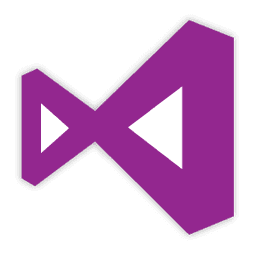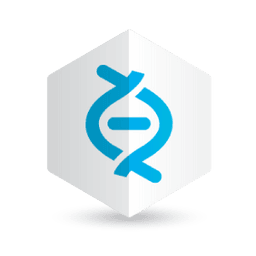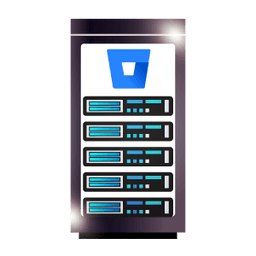- Top 10 DevOps Tools for Continuous Integration
- Top 10 Devops Tools
- Repository Management Tools
- 10 Tools For Effective DevOps Collaboration
- Top 12 Open Source DevOps Build Tools
- Configuration Management Tools in DevOps
- Agile Vs DevOps
- Chef DevOps Interview Questions
- What is Continuous Integration in DevOps?
- Insights of DevOps Architect
- DevOps Automation: How is it Carried Out?
- Introduction To DevOps Docker
- DevOps For Dummies
- DevOps Interview Questions
- 13 DevOps Testing Tools For DevOps Professionals
- Best DevOps Tools and Frameworks to explore
- DevOps Tutorial For Beginners: A Step-by-Step Guide To Learn DevOps
- Cacti Graphing And Monitoring
- RANCID Tool Keeps Config Files Clean
- How To Enable LLDP on Linux Servers for Link Discovery
- How to set up a modern web stack in Ubuntu
- Useful Iperf Commands for Network Troubleshooting
- Migration of MongoDB to DynamoDB
- MongoDB and Tree Structures
- Multihost SSH Wrapper
- DevOps Tools for Infrastructure Automation
- Introduction To Azure DevOps
- Introduction To DevOps Tools
- List of DevOps Monitoring Tools
- The Ultimate List of DevOps Deployment Tools
- Top 10 Open Source Containerization DevOps Tools
- Reasons for the Rise of DevOps
- Role Of a DevOps Engineer
- DevOps Security Tools
- Some Common Myths about DevOps
- Top 10 Devops tools in cloud
- Release Management Tools
- Logging DevOps Tools
- DevOps And Its Significance
- DevSecOps Interview Questions
- Ansible vs Chef
- DevSecOps Tutorial
- What is Site Reliability Engineering - SRE Tools
- Site Reliability Engineer(SRE) Interview Questions
- What is DataOps?
- DevOps Vs SysOps
- DevOps Engineer Job Description
- Azure DevOps Jira Integration
- What is Pipeline in DevOps?
- SonarQube Azure DevOps
- Azure DevOps CI/CD
SCM stands for Source Code Management is an integral part of any development project in the current IT world. The same is the case with the DevOps culture, where storing the work results and sharing the details with colleagues is an essential part too. Source Code Management and Version Control Systems in any project ensure all the members of a team stay on top of the source code changes.
Having said that, a common mistake that most people do is to assume that the Source Code Management tool will by itself solve all the SCM problems or support the SCM requirements of the project. To break the jynx, it is not the tool itself that solves the problem but the application of that tool resolves these SCM-related issues. How you apply the SCM tool to your development environment is called the usage model, or SCM process. It is this model or process that will in part determine how successfully you address your SCM issues.
Source Code Management tools are the crucial ones that make or break the effort put in by multiple developers, in coordinating parallel work on similar features and integrate these to make the final product. In addition to the actual source code, it also manages the configuration files as well. The application deployment can be facilitated when the configuration of cloud services is under version control.
Want to enhance your skills to become a master in DevOps Methodology, enroll in our "DevOps Training"
Types of Source Code Management (SCM) DevOps Tools:
In this section, we will try to look into the number of options that we have in the space of Source code management. There is a multitude of options available but we will go through the best of the best that caters to needs and requirements in various DevOps pipelines. Alongside going through the tools themselves, we will also take a brief look into the advantages that these tools will bring to the table as well. Let us not take any further time on pondering around the introductions any further and go through the tools and their advantages:
1. Team Foundation Server (TFS):
 If you are into a Health IT organization and need to manage health-related data such as patient prescription, health records, doctor-patient relationship data, then you probably in need of a salesforce health cloud that will take care of everything. It is specially designed to store and organize patient information to provide the best health assistance.
If you are into a Health IT organization and need to manage health-related data such as patient prescription, health records, doctor-patient relationship data, then you probably in need of a salesforce health cloud that will take care of everything. It is specially designed to store and organize patient information to provide the best health assistance.
Coming to the next tool under discussion from the exhaustive list of paid DevOps tools, comes the next – Team Foundation Server (abbreviated with TFS) is a Microsoft produce to cater to the Source Code Management requirements. It works pretty well with both the ways of development, namely Agile software development and also the Waterfall model development. Apart from the Source Code Management capabilities, it also caters to automated builds, Lab Management, Test and Releases management capabilities. Not to mention that it covers the whole application development lifecycle and enables all the possible DevOps capabilities.
Following are some of the advantages of using Team Foundation Server (TFS), let us now take a look at each and every one of them:
Advantages:
- Team Foundation Server (TFS) had built-in support for Visual Studio (IDE integration)
- TFS has built-in support for ticket tracking
- There is a possibility to lock files before you commit your changes into the repository with TFS
- Has a fantastic GUI for all the operations to be performed over TFS
2. Kallithea:
 If you are into a Health IT organization and need to manage health-related data such as patient prescriptions, health records, doctor-patient relationship data, then you probably in need of a salesforce health cloud that will take care of everything. It is specially designed to store and organize patient information to provide the best health assistance.
If you are into a Health IT organization and need to manage health-related data such as patient prescriptions, health records, doctor-patient relationship data, then you probably in need of a salesforce health cloud that will take care of everything. It is specially designed to store and organize patient information to provide the best health assistance.
Kallithea is an open-source and free source code management system for software that supports the leading version control systems – Mercurial and GIT. It is a fast and powerful tool with a built-in push/pull server and also provides full-text search, code-review. Works pretty smooth on both HTTP and HTTPS protocols with a built-in permission/authentication system. Authenticates via the capabilities of LDAP or Active Directory and also provides APIs for easier integration with the external world. Kallithea is quite similar to GitHub or Bitbucket in more than one way but Kallithea marks its own ground with its feature as a standalone hosted application on your server. It works on UNIX systems and Windows as well, powered by the VCS libraries to handle multiple Version Control Systems.
Following are some of the advantages of using Kallithea, let us now take a look at each and every one of them:
Advantages:
- Kallithea as a free software source code management system provides all features required for code review.
- Provides support to inline comments and also comments on specific commits
- Search along with repository browser capabilities
- Visualization of full changelog
- A demo page that shows its usage and also its features without actually having to install it on any server of your own makes it very easy for individuals or organizations to choose as their source code management software.
3. Helix Core Version Control:
 If you are into a Health IT organization and need to manage health-related data such as patient prescription, health records, doctor-patient relationship data, then you probably in need of salesforce health cloud which will take care of everything. It is specially designed to store and organize patient information to provide the best health assistance.
If you are into a Health IT organization and need to manage health-related data such as patient prescription, health records, doctor-patient relationship data, then you probably in need of salesforce health cloud which will take care of everything. It is specially designed to store and organize patient information to provide the best health assistance.
The next product in the listing for the day is Helix Core Version Control which is based on the Versioning engine that powers Perforce customers who see lightning-fast, file-level asset management. Helix Core, formerly known as Perforce Helix is the version control engine for the large scale development environments. It manages a centralized database and also along with it a master repository of all possible file versions.
Helix Core clients are classified into 5 categories (based on the way that they connect to the Code repository): GIT, Command, GUI, Web, and Plugin. Perforce system can make a portion or all of its content made available as GIT repositories. Users of GIT and of other clients can make use of this and work with the same file content and history. GIT commits will further be visible to others as Perforce Changelists and the other way round for others.
Following are some of the advantages of using Helix Core Version Control, let us now take a look at each and every one of them:
Advantages:
- Users can work remotely from any part of the world, pulling only the files that they require
- Users can add a lock over files in order to prevent overwrites on binaries
- Users can set granular permissions to the file level for having complete control
- Users will be ensured consistent performance even when the repositories scale further
- Users will be having global visibility, as in, which files are checked out by which users and etc.
- Users are provided the best of the tools to identify differences in the files that they work on parallel before commits
- It simplifies and also automates the branching best practices
- It provides a pretty good search functionality, which scans your entire repository for any content that you are currently interested in.
4. GitLab:
 If you are into a Health IT organization and need to manage health-related data such as patient prescriptions, health records, doctor-patient relationship data, then you probably in need of a salesforce health cloud which will take care of everything. It is specially designed to store and organize patient information to provide the best health assistance.
If you are into a Health IT organization and need to manage health-related data such as patient prescriptions, health records, doctor-patient relationship data, then you probably in need of a salesforce health cloud which will take care of everything. It is specially designed to store and organize patient information to provide the best health assistance.
GitLab is yet another repository management tool that is hosted on the free hosting service named GitLab.com, alongside that it also offers Git repository management function with features as access control, bug tracking, and code reviewing. GitLab CI is completely unified with GitLab and it is very easy to use to link projects via the usage of GitLab API. Built using the Go language, GitLab has the ability to execute various operating systems like Windows, Linux, Docker, OSX, and FreeBSD.
Following are some of the advantages of using GitLab, let us now take a look at each and every one of them:
Advantages:
- GitLab Continuous Integration (CI), Continuous Delivery (CD) is an integral part of GitLab and is free as an offering from GitLab.com
- The learning curve is pretty flat whereas the topics are all covered in detail in the quick start guides
- GitLab Continuous Integration/Continuous Delivery offers the same experience as GitLab which are familiar, easy to use and all beautiful.
- Tests run distributed on separate machines, which can be added at any point in time – scalability of the machines
- Each of the builds can be split into multiple jobs which can run in parallel on multiple machines to provide faster results
- Continuous Delivery is achieved in multiple stages, environments and can be done in manual deployments.
- Both the CI and CD features are included in both the open-source GitLab Community Edition and also in the proprietary Enterprise Edition.
5. Bitbucket Server:
 If you are into Health IT organization and need to manage the health-related data such as patient prescription, health records, doctor-patient relationship data, then you probably in need of salesforce health cloud which will take care of everything. It is specially designed to store and organize the patient information to provide the best health assistance.
If you are into Health IT organization and need to manage the health-related data such as patient prescription, health records, doctor-patient relationship data, then you probably in need of salesforce health cloud which will take care of everything. It is specially designed to store and organize the patient information to provide the best health assistance.
Atlassian’s offering in the form of Bitbucket Server is a combination of GIT server and web interface product. It is usually a web-based hosting solution that is targeted for projects which use either of Mercurial or GIT version control systems. This tool is specifically developed for the professional teams, as it not just enables users to code but also to manage and collaborate on GIT projects.
Following are some of the advantages of using Bitbucket Server, let us now take a look at each and every one of them:
Advantages:
- BitBucket provides a distributed control system that allows the easiest of collaboration between the users and also enables massive scaling.
- BitBucket also boasts of providing unlimited private and public repositories.
- BitBucket also provides granular permissions and hence the Workflow feature of it is pretty secure
- It provides a provision to integrate with the leading business applications like Bamboo, JIRA, and HipChat. This also helps the users to work efficiently and productively.
6. Subversion:
 If you are into Health IT organization and need to manage the health-related data such as patient prescription, health records, doctor-patient relationship data, then you probably in need of salesforce health cloud which will take care of everything. It is specially designed to store and organize the patient information to provide the best health assistance.
If you are into Health IT organization and need to manage the health-related data such as patient prescription, health records, doctor-patient relationship data, then you probably in need of salesforce health cloud which will take care of everything. It is specially designed to store and organize the patient information to provide the best health assistance.
Subversion is an open-source version control system (VCS) that manages files and directories and the corresponding changes made to them over the project’s life cycle. By that, there is always an opportunity to recover the older versions of the files, if there are any issues with the current code and also let you check on the history of your code. It allows users from different geographical locations to access the same code and work on the same code in a collaborative way.
There are some version control systems that are also known as Software Configuration Management (SCM) systems. These systems are tailor-made specifically to understand a specific programming language or provide build tools or build a mechanism for software development. Luckily Subversion is not one of these systems. It is a general system that can be used to manage any collection of files which could be source code or general documentation as well. Subversion has enjoyed and continues to enjoy widespread adoption in both the open-source arena and the corporate world.
Following are some of the advantages of using Subversion, let us now take a look at each and every one of them:
Advantages:
- You have a provision to check the difference between your source and the one against repository to be able to see your changes
- Rolling back to revisions is yet another provision that Subversion provides
- Decent upload, download speeds and ability to customize is pretty nice
- It is a pragmatic technology with simple terminology and simple tools
- It has the ability and capability to integrate with any given platform
- Conflict resolving is of great fun with Subversion
- This allows users to work on the same file at the same time and during commits, these changes will be resolved. The ability to configure it is very much welcome by the community as well.
7. Mercurial:
 If you are into Health IT organization and need to manage the health-related data such as patient prescription, health records, doctor-patient relationship data, then you probably in need of salesforce health cloud which will take care of everything. It is specially designed to store and organize the patient information to provide the best health assistance.
If you are into Health IT organization and need to manage the health-related data such as patient prescription, health records, doctor-patient relationship data, then you probably in need of salesforce health cloud which will take care of everything. It is specially designed to store and organize the patient information to provide the best health assistance.
Mercurial is a free and also a distributed source control management tool that handles projects of any size efficiently. It is a cross-platform solution as it is available for Windows, FreeBSD, Mac OS X, and Linux Operating systems. The Mercurial project was initiated just in the same era as was the time when GIT was getting developed. As a matter of fact, GIT was adopted for version control for Linux projects and Mercurial was adopted by many other development projects per se. Mercurial is still under active development and the latest release that we have is release 3.8.4 as on 1st July 2016.
Following are some of the advantages of using Mercurial, let us now take a look at each and every one of them:
Advantages:
- One of the greatest advantages of using Mercurial is the ability to track the changes and rollback to a specific revision of the file that one is working on.
- The next biggest advantage is the ease in extending or modifying the tool itself as it is very well written in Python.
- Mercurial in conjunction with tools like hg bisect make bug chasing pretty quicker
- Ease of use can be accentuated with front-end tools like TortoiseHg and SourceTree.
- Ease of use while performing operations as like branching, marching, rebasing and reverting file changes, access control to files
- Integrates pretty well with most of the IDEs such as Visual Studio, Eclipse, IntelliJ IDEA
- Commands used in Mercurial are pretty simpler than compared to the ones used on GIT.
- Mercurial is very nice whereas GIT is too confusing and can become an overkill very quick
Frequently asked DevOps Interview Questions & Answers
8. GIT:
 If you are into Health IT organization and need to manage the health-related data such as patient prescription, health records, doctor-patient relationship data, then you probably in need of salesforce health cloud which will take care of everything. It is specially designed to store and organize the patient information to provide the best health assistance.
If you are into Health IT organization and need to manage the health-related data such as patient prescription, health records, doctor-patient relationship data, then you probably in need of salesforce health cloud which will take care of everything. It is specially designed to store and organize the patient information to provide the best health assistance.
As far as GIT is concerned, it is known to have the smallest footprint possible and has lightning-fast performance. Another advantage over and above what is already mentioned is that it is easy to learn as well. Git outclasses the other SCM tools in the family-like Subversion, CVS, Perforce and ClearCase with features such as local branching, provision of convenient staging areas and a varied number of workflows. It is by far the most widely used version control system that is in use in the world today. Git being mature enough to handle most of it also has an actively maintained open source community.
Not just that, there are numerous projects that are relying on Git as we speak including the commercial and open-source projects. Git works in a varied number of IDEs available these days and is known to work in all the major operating systems. Rather than holding all the version history of the software at a common place like Subversion or CVS – Git ensures that every developer’s working copy has the code which also contains the full history of all changes. Git is also designed keeping in mind the performance, security, and flexibility in mind.
Following are some of the advantages of using Git, let us now take a look at each and every one of them:
Advantages:
- With all the below advantages, it is a definite requirement that each and every developer should be using Git as it is the best way to track changes to the code.
- It is a capable tool in the Version control space and is even more powerful with the diverse set of command-line tools
- There is a provision to point to a local copy of the code to the local repository of a colleague/co-worker rather than that of a server
- Provides tools to view the changes made in the code for each commit
- It is very quick to put the changes in the stage and then to commit them.
- The ease of use of the application is very easy even without a user interface too.
- Having said all these, it is very much maintainable and robust
- You can just squash commit your changes which are again one of the best features provided by Git
- You can rebase the code which is again a very interesting feature provided by Git.
9. GitHub:
 If you are into Health IT organization and need to manage the health-related data such as patient prescription, health records, doctor-patient relationship data, then you probably in need of salesforce health cloud which will take care of everything. It is specially designed to store and organize the patient information to provide the best health assistance.
If you are into Health IT organization and need to manage the health-related data such as patient prescription, health records, doctor-patient relationship data, then you probably in need of salesforce health cloud which will take care of everything. It is specially designed to store and organize the patient information to provide the best health assistance.
Most of the developers who are in the industry already would have heard about GitHub, but it also frustrates a lot of developers to date on what exactly is it intended for. All that being said, yet a lot of people don’t really understand what it does. GitHub is an awesome SCM tool that helps bring teams to get together in the process of resolving problems with the code changes that they bring in to the existing code. They move ideas forward, learn from each other along the whole way. GitHub an amazing SCM tool that lies on the same grounds of Git and the others are also the best places to share code with Friends, Colleagues and etc. GitHub has also seen a lot of user acceptance along with the other SCM tools being available in the market for years.
Following are some of the advantages of using GitHub, let us now take a look at each and every one of them:
Advantages:
- Most of the useful projects are either on Git or on GitHub.
- You could share your code, documentation, presentations in a very easy manner.
- This is the best place for all the programmers with both public and private repositories to work with.
- There are a varied number of integrations that can be done along with GitHub, which makes it appealing amongst the programmers
- It provides one of the cleanest and the best UIs to navigate with all its useful features as assigning issues, pulls requests, labels, and milestones.
- The whole system is simple but very useful
- Creation of projects, documentation and almost everything that relates to your projects at one place
- One of the best ways to clean up or reorganize all the present issues is done along with the Milestones feature.
- There is a provision for anyone to host, review the code or to manage the projects
- It gives you the collaboration when working on open source projects where you can work alongside developers from various other nationalities.
10. Gerrit:
 If you are into Health IT organization and need to manage the health-related data such as patient prescription, health records, doctor-patient relationship data, then you probably in need of salesforce health cloud which will take care of everything. It is specially designed to store and organize the patient information to provide the best health assistance.
If you are into Health IT organization and need to manage the health-related data such as patient prescription, health records, doctor-patient relationship data, then you probably in need of salesforce health cloud which will take care of everything. It is specially designed to store and organize the patient information to provide the best health assistance.
Gerrit is yet another GIT based SCM tool that manages a lot more than just code reviews. It helps in spreading the popular distributed revision control systems (DRCS) tools into the android using companies that fund heavily on having healthy quality assurance, management and legal processes in the software world. Gerrit is a free and also an open-source web-based team code collaboration tool. Developers from a team can review each other’s code changes using the Web browser and based on the changes can either approve or reject them.
Gerrit integrates closely with GIT, the distributed version control system (DVCS). Gerrit is originally a fork from Rietveld, yet another code review tool. It is originally written in Python but now is written in Java (Java EE Servlet) with SQL since v2. Gerrit internally uses Google Web Toolkit (GWT) to generate the front-end JavaScript code from Java source.
Following are some of the advantages of using Gerrit, let us now take a look at each and every one of them:
Advantages:
- Gerrit provides the best of the UIs when compared in the SCM tools that we have reviewed until now (which provides the perfect understanding of the new users).
- There is a provision to cherry-pick the commits using GIT commands or else perform any other action on that particular commit using just the commit id.
- Gerrit provides free and powerful GIT integration.
- Gerrit also provides powerful integration with Jenkins, using which you can also implement the automation process using Jenkins.
- Gerrit also has the provision to connect with Redmin and has HTTP APIs to connect to Jenkins as well
- The fact that it is built over GIT makes it easier for anyone to move towards Gerrit comfortably.
Conclusion:
In this article, we have gone through the concept of Source Code Management and also tried to understand the importance of such a tool in any development project. Specifically, when SCM tools are put into the DevOps pipeline, it brings a load of advantages to the developers and to the project inturn. We have briefly gone through all these tools and the benefits that these tools bring to the developers as well. I hope you have got all the details that you were looking for from this article itself.
Explore DevOps Sample Resumes! Download & Edit, Get Noticed by Top Employers!Download Now!
Related Articles:
List Of Deployment DevOps Tools
List of BI Or Monitoring DevOps Tools
Top 12 Open Source DevOps Build Tools
Top 10 Repository Management DevOps Tools
 On-Job Support Service
On-Job Support Service
Online Work Support for your on-job roles.

Our work-support plans provide precise options as per your project tasks. Whether you are a newbie or an experienced professional seeking assistance in completing project tasks, we are here with the following plans to meet your custom needs:
- Pay Per Hour
- Pay Per Week
- Monthly
| Name | Dates | |
|---|---|---|
| DevOps Training | Jan 03 to Jan 18 | View Details |
| DevOps Training | Jan 06 to Jan 21 | View Details |
| DevOps Training | Jan 10 to Jan 25 | View Details |
| DevOps Training | Jan 13 to Jan 28 | View Details |

Ravindra Savaram is a Technical Lead at Mindmajix.com. His passion lies in writing articles on the most popular IT platforms including Machine learning, DevOps, Data Science, Artificial Intelligence, RPA, Deep Learning, and so on. You can stay up to date on all these technologies by following him on LinkedIn and Twitter.
















